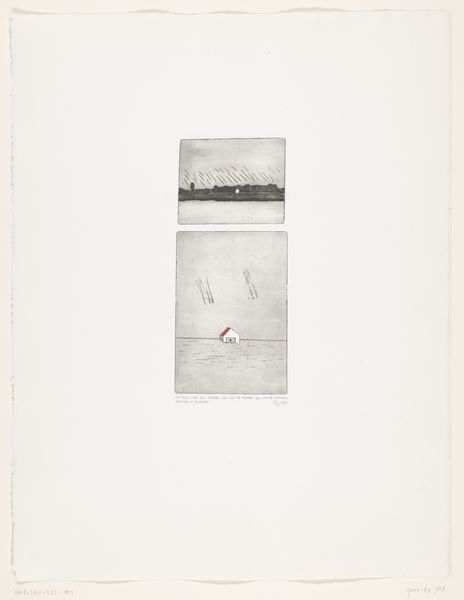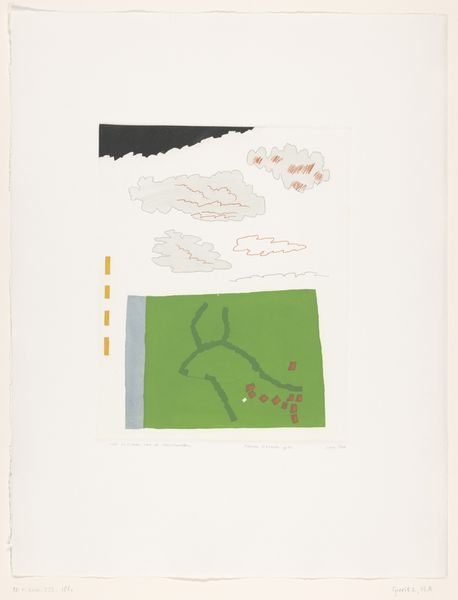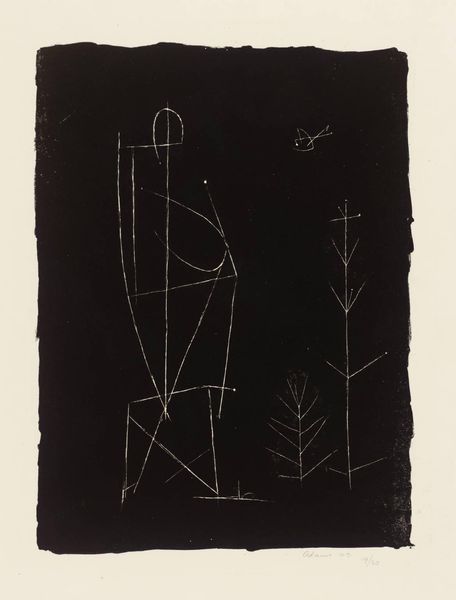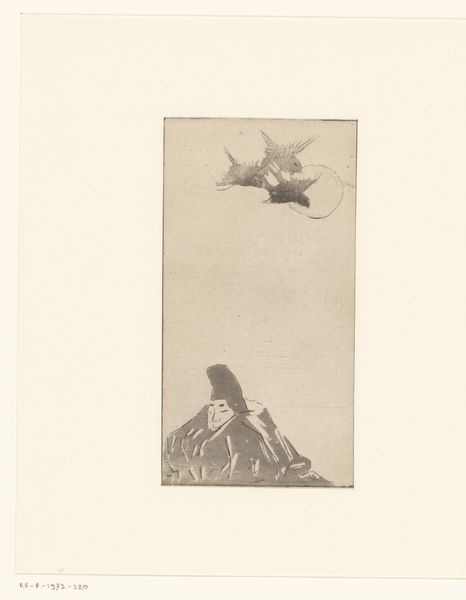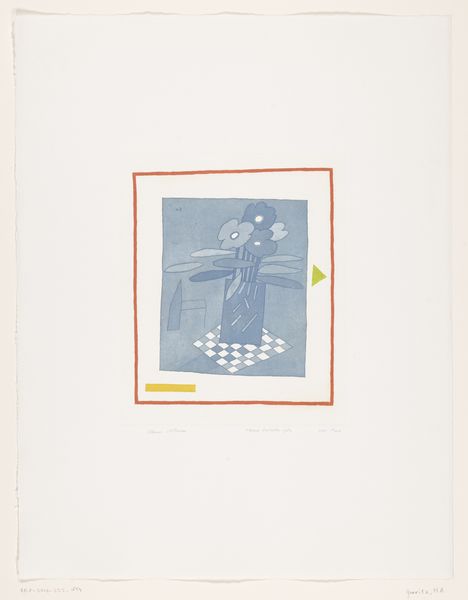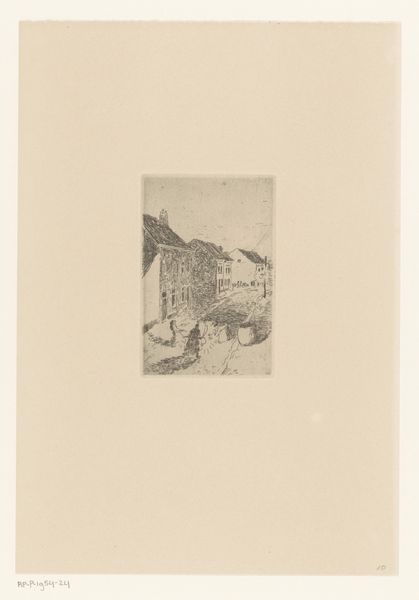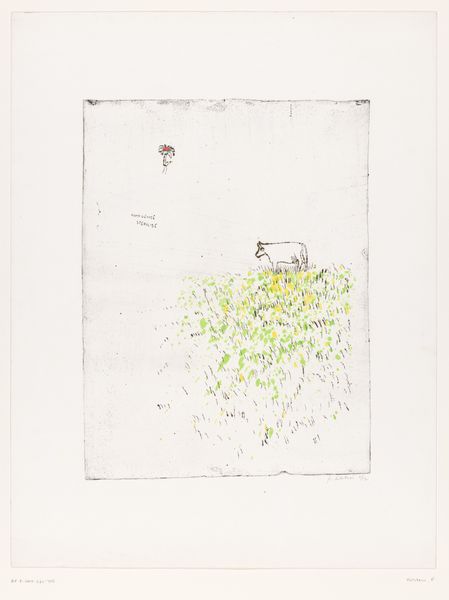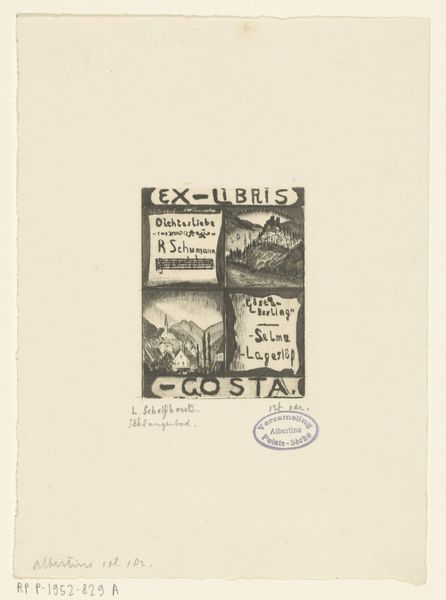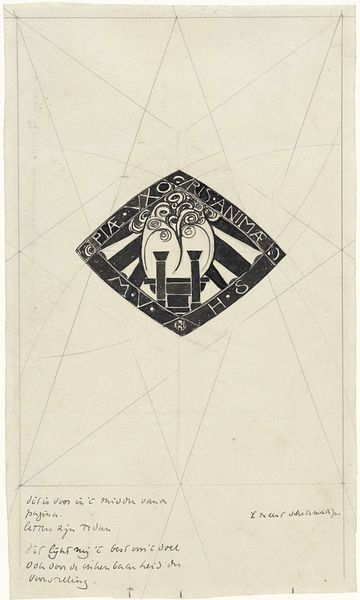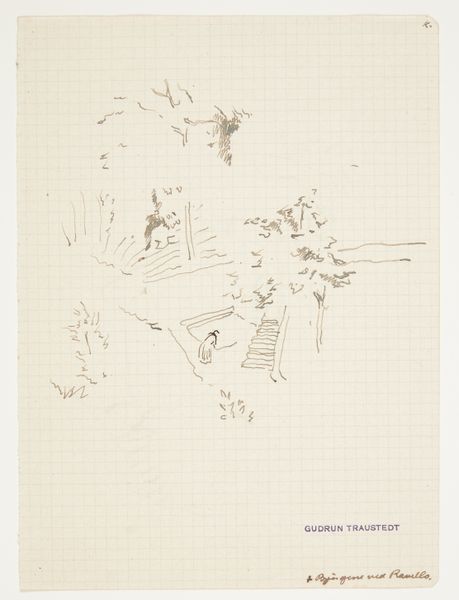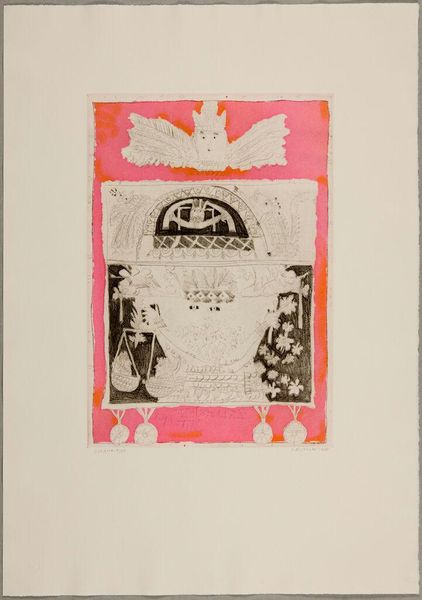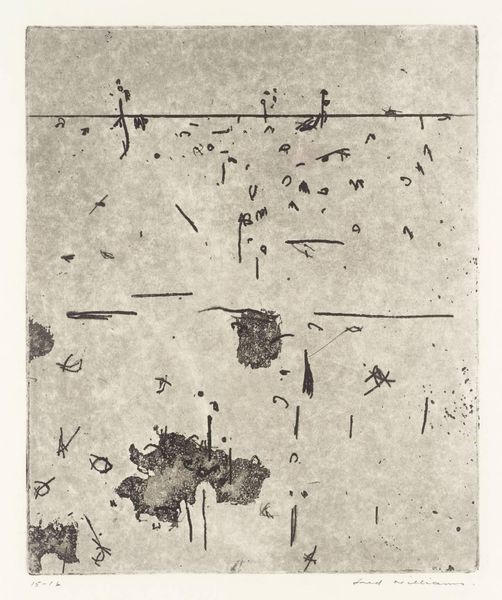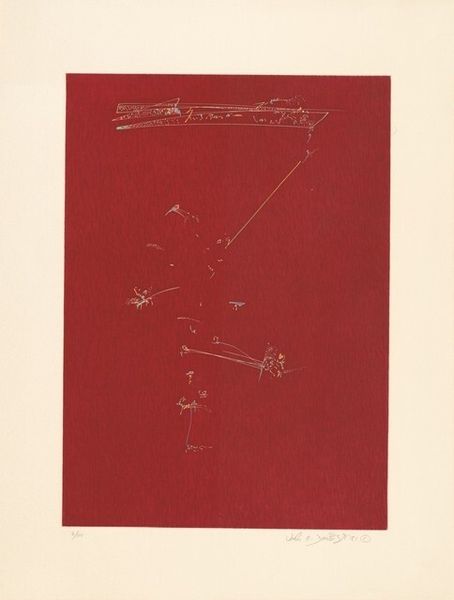
Dimensions: height 780 mm, width 553 mm, height 434 mm, width 330 mm
Copyright: Rijks Museum: Open Domain
Curator: Welcome to the Rijksmuseum. We are standing before “Tekens van de zwarte vogel”, or “Signs of the Black Bird,” a print and drawing in ink made in 1984 by Harrie A. Gerritz. Editor: It has such an ethereal, almost ominous feel, doesn’t it? The bird seems suspended against that mottled sky of geometric marks and strokes. The whole work carries a strange feeling. Curator: The artwork uses very interesting geometric forms mixed with recognizable imagery such as birds, which could speak to cultural symbolism. In many societies, the black bird symbolizes transformation and the crossing of boundaries, death, or a warning. We see those little red rectangles in the 'sky,' giving a kind of distorted feeling to the landscape that could symbolize social and political disturbance at the time of its making. Editor: And those footprints? Very basic—arrow shapes that seem to guide the bird forward, emphasizing the materiality and grounded trajectory in the print and its meaning, literally printing the trail of the bird’s path through its territory and therefore highlighting material choices with respect to symbolic implications. Look how that one streak of pale green crosses through everything! Curator: The use of simple lines, almost child-like forms and the juxtaposition of these symbols evokes the complexities that surround identity and displacement within changing environments. This work may connect to how Gerritz reflected on socio-economic inequalities or the threat of cultural erosion. Editor: Considering it's an ink drawing with print elements, it shows how an artist in the 1980s utilized accessible materials to voice important social messages, perhaps reflecting broader production constraints on artists at the time? The use of prints democratized production and distribution, after all, aligning his output with a wide dissemination of progressive and activist ideas, no? Curator: Precisely, looking at it with this wider social framework reminds us about its position within a context of political critique and perhaps gives the work added depth as a symbolic text and narrative. Editor: A stark reminder that art is always deeply enmeshed with production processes, social forces, and with powerful interpretive agency depending on those contexts. It gives me even more to consider about the implications of those footprints.
Comments
No comments
Be the first to comment and join the conversation on the ultimate creative platform.
